PowerPoint presentations don’t have to be boring – you can use animations in PowerPoint to excite your audience.
PowerPoint offers a series of animations that you can attach to the text, images, and objects in your presentation. It doesn’t matter if your presentation is serious and professional or light-hearted and light-hearted, because there must be a PowerPoint animation to match it.
If you want to use animations in PowerPoint, this is what you will need to do.
How to add animations in PowerPoint
To add a new animation in PowerPoint, start by selecting the element you want to use. It can be a text, an image or photo, a table, a shape, or a SmartArt graphic.
Then go to the tab Animations. You will see the collection of effects available in the section Animation of the tape. Use the small arrows on the right to view the animations one at a time, or click the arrow at the bottom to view the entire collection.

You will see the options to apply an animation of Entry, Emphasis or Departure. When you apply the first animation, any other animation you select here will replace it.
This allows you to review the options for the perfect fit.
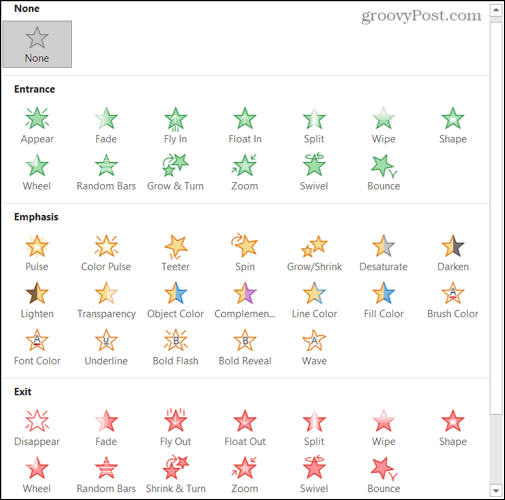
You can also use more than one animation per element. For example, you can apply each of the three types of animation if you want.
To add another animation to an element, assign the first one. For each additional animation, click Add animation in the section Advanced animation tape and add the next one.

When you apply an animation to your item, you will see a number appear next to the item on your slide. If you use more than one animation per element, you will see a number for each one. We will see how to use these numbers later.

To see the animation in action, click the button Preview on the left end of the tape. If you want to see a preview automatically when you apply an animation, click the arrow below Preview and select Automatic preview to place a check mark next to it.
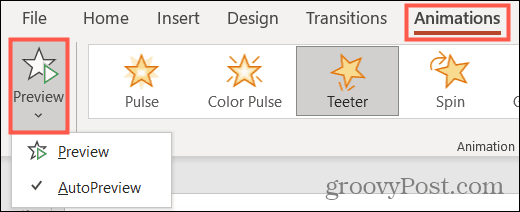
Once you have an animation assigned to an element, you will see several tools to customize the behavior of that animation. We will explain how to use them below.
How to customize PowerPoint animations
When you add an animation to an element of your presentation, you can customize certain aspects of it. These include variation effects such as a direction or shape, a trigger for the animation to start, and the time for the start, duration, and delay.

Select a variation effect
First, you can customize the way the animation appears or moves. To do this, go to the tab Animations, and you will see the Effect Options to the right of the animation selection.
The options in this list differ depending on the animation you use. Let’s see examples.
If you choose an input animation like Fly in, you can choose the direction in which the animation appears from above, below, left or right.
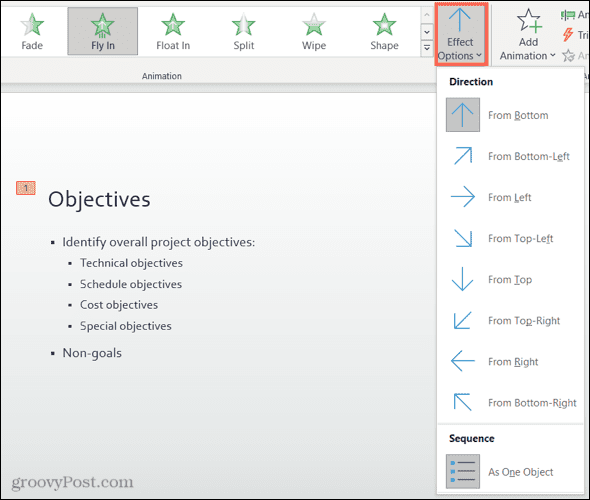
If you choose an emphasis animation like Turn, you can make the object turn clockwise or counterclockwise and make a quarter, half, full turn, or two turns.
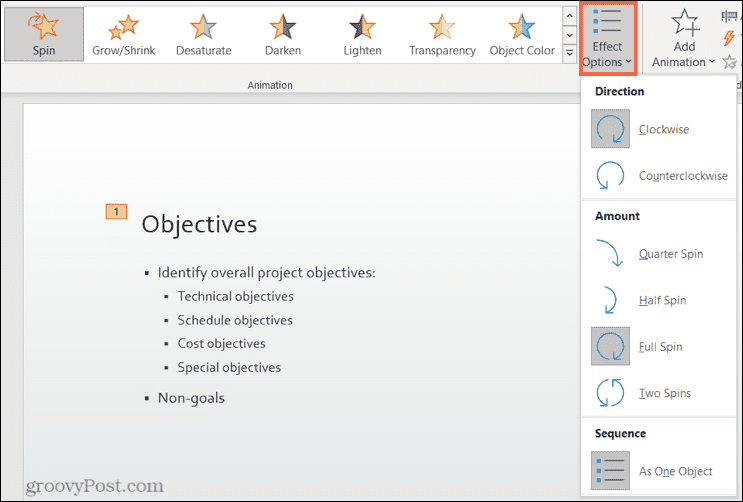
Add a trigger
In some cases, you may want your animation to be based on another action.
In the tab Animations, click on Activate in the section Advanced animations of the tape. You will see the options Clicking and When dialing.
Choose the action you want, and then select the trigger from the drop-down menu.

Set time
Another remarkable feature of PowerPoint animations is timing. You can set a start time, duration period, and delay for each animation in the Timing section of the tape.
For it:
- Beginning: Set the animation to start on click, with the animation before or after the previous one.
- Duration: Each animation has a default duration in seconds, but you can increase or decrease the duration of the animation. Use the arrows or enter the number of seconds.
- Delay: You can add time before the animation is shown using the arrows or by inserting several seconds.

Reorder animations
If you use a variety of animations for a single item or for different elements on your slide, you can play them in the order you choose. By default, PowerPoint sorts animations in the sequence in which you apply them. This is where animation numbers come in handy.
If you have a particular animation that you want to move before or after another, you can use the section Reorder Animation of the tape on the tab Animations.
To do this, select the animation and click Move before or Move after. You will see that the numbers adjust to the updated order of your animations.

Using the animation panel in PowerPoint
If you are working with a large number of animations, the best way to keep track of them, rearrange them, or adjust the timing is with the Animation panel. This handy tool lists all slide animations in order in a sidebar.
Press the Animation panel in the section of Advanced animation on the Ribbon to open it.
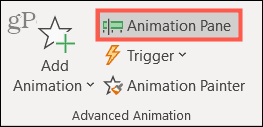
Then select an animation in the panel – you will see its number highlighted on the slide. This will let you know exactly which animation you are working with.

If your animation has a lot of content, such as text, you may see it collapsed. Double click the bar at the bottom to expand it.
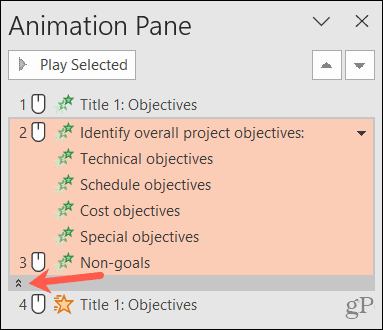
Click the arrow to the right of an animation to adjust the Beginning, Effects options and Weather. You can also select Remove to erase the animation.
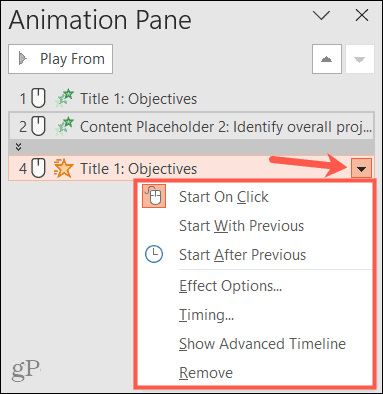
To reorder your animations, select one, drag it to its new location in the list, and release it. You can also select an animation and use the arrows at the top right of the sidebar.
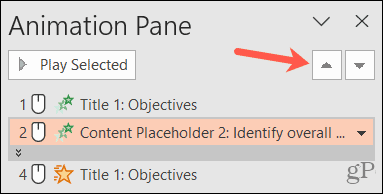
To preview all the animations in your list, select the first one and click Play from at the top of the sidebar. For a particular animation, select it, and the button will change to Play Selected.
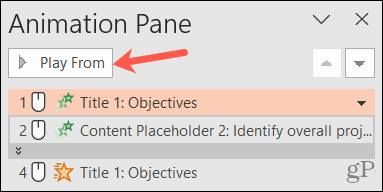
Create powerful animations in your PowerPoint presentation
Don’t be afraid to experiment with animations in PowerPoint, but make sure you use the right animations for the right audience.
For example, you may decide to use subtle animations to drag text onto your slide or a more visually exciting animation to rotate an image and make it blink. You’ll have a ton of animations to choose from, with a significant amount of flexibility to help you customize them to your own needs.




